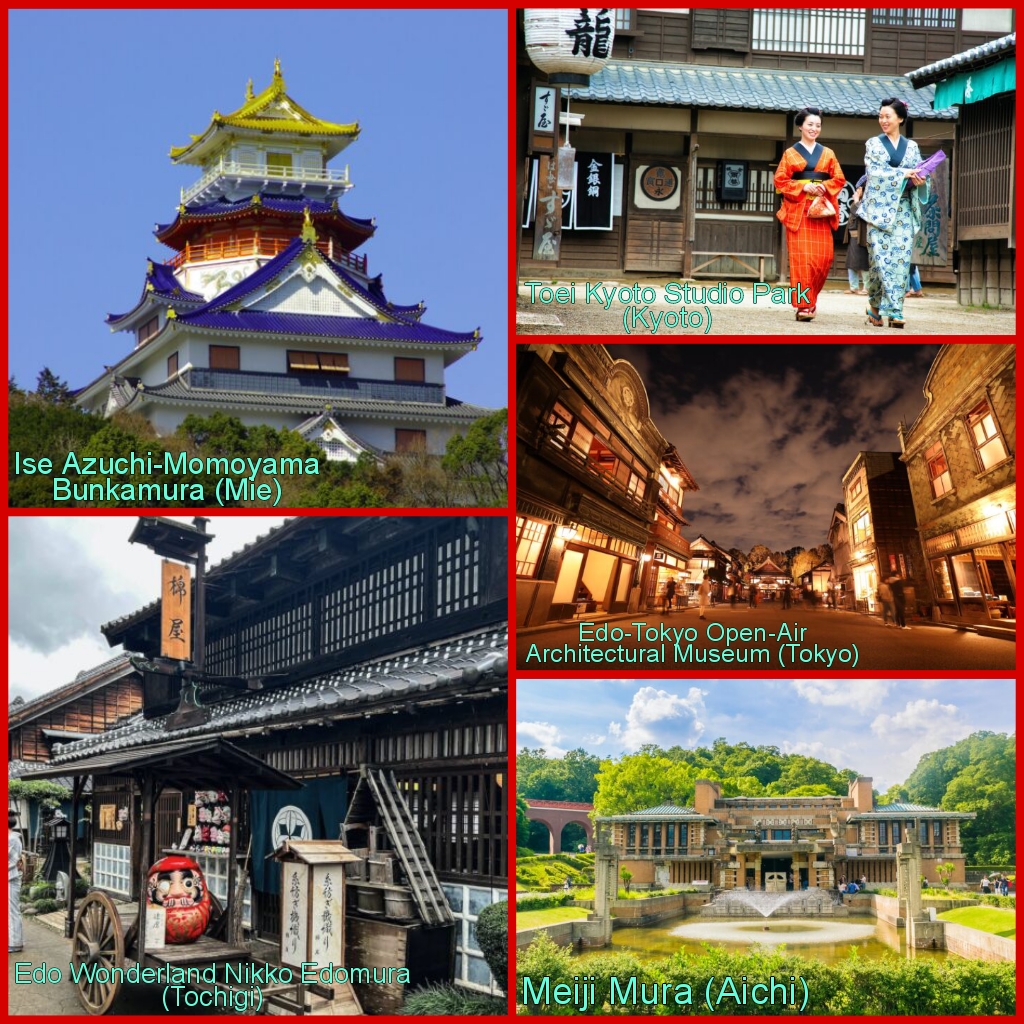5 Japanese Historical Parks That Will Take You Back In Time

Japan has a long and rich history of colorful characters like samurai, ninja and powerful warlords. Fans of the past can find plenty to love in Japan, from manga and anime to well-stocked museums. To really get a feel for the country’s historical diversity, though, what better way than to experience it yourself at a historical park?
Scattered around the country are several must-visit parks that transport you directly into Japan’s distant past. Some are like open-air museums, buildings you can wander through, while others combine the excitement of an amusement park with historical accuracy. No matter your choice, you’ll have fun and learn something too.
Here are our picks for the five best historical parks in Japan.
1. Ise Azuchi-Momoyama Bunkamura (Mie)
The Azuchi-Momoyama period lasted from 1568 to 1600 and encompassed the final years of the Sengoku period, the time of the Warring States. Relive this tumultuous era of warlords, samurai and ninja at Ise Azuchi-Momoyama Bunkamura, a theme park in Ise in Mie Prefecture.
Designed like a period town, the park features staff in era-appropriate costumes and ninja and oiran (courtesan) performances. There are also activities (with separate entrance fees), such as the Ninja Maze and Nyamage Theater. The one you’re really going to want to see is the reconstruction of Oda Nobunaga’s Azuchi Castle.
The Azuchi-Momoyama period is a particularly exciting time in Japanese history, so it’s well worth visiting the park. Kids will love it too.
2. Edo Wonderland Nikko Edomura (Tochigi)
The Edo era began when Tokugawa Ieyasu united all of Japan, ending the long civil war. The resulting 268 years of peace were known as the Edo period, named after the city where Tokugawa set up his military government (now called Tokyo). That era is recreated at Edo Wonderland Nikko Edomura at Nikko in Tochigi Prefecture.
Constructed to look like a village from the time, Edo Wonderland Nikko Edomura is populated by staff dressed like townspeople. Guests can play dress up, too, with kimono costumes available for rent. The park is sometimes used as a location for period TV shows, so there’s historical accuracy in its shop fronts that historians will appreciate. Those there just for fun will also have plenty to enjoy, including a haunted temple, a house of illusion and a ninja-themed maze. There are also two wax museums and plenty of live performances.
If you’re headed to Nikko to see Toshogu Shrine, Edo Wonderland Nikko Edomura makes a pleasant side trip.
3. Toei Kyoto Studio Park (Kyoto)
If the previous two parks sound too much excitement, try Toei Kyoto Studio Park. Also known as Toei Uzumasa Eigamura, this park combines a film set and a low-key theme park. Another recreation of a feudal town, this one is notable in that it’s also a working set for film and TV productions. If they happen to be filming on the day you’re there, you’ll be welcome to watch the show.
Along with the usual period-costume-wearing staff and depictions of everyday town life, Studio Park features the kinds of places that appear in historical dramas and movies, like a recreation of Nihonbashi Bridge, a Meiji period police box, a traditional courthouse and a portion of Yoshiwara, the samurai-era red light district. Note that some attractions require separate admission.
If you’re headed to Kyoto and fan of Japanese period movies or TV shows, Toei Kyoto Studio Park should be on your to-visit list.
4. Edo-Tokyo Open-Air Architectural Museum (Tokyo)
Many of the parks on this list are rather far from Tokyo. However, suppose you’re traveling or living primarily in the capital and want to experience a Japanese time slip. In that case, as the locals say, the Edo-Tokyo Open-Air Architectural Museum is a must-see.
Located in Koganei Park on the western side of Tokyo, Edo-Tokyo Open-Air Architectural Museum is, as you’d expect from the name, more of a museum-like experience than an amusement park. It features many historical buildings that have been painstakingly moved here from around Tokyo and restored to their former glory.
In contrast to what you might expect with a name like Edo-Tokyo, which suggests the samurai era, most buildings here are from the Meiji period (1868-1912). With the buildings packed close together in residential and commercial areas, it’s like taking a stroll through an actual neighborhood—just one fixed firmly in the past.
5. Meiji Mura (Aichi)
Located in the hills of Inuyama in Aichi Prefecture, Meiji Mura offers a similar experience to the Edo-Tokyo Open-Air Architectural Museum but on a grander scale, with large buildings like cathedrals and mansions sitting alongside everyday homes.
Reflecting the name, most buildings are from the Meiji period, when Japan modernized, borrowing several Western ideas. This is reflected in the architecture, with the park’s centerpiece being the lobby and entryway for Frank Lloyd Wright’s Imperial Hotel. Yes, the actual hotel.
Buildings aside, the park itself makes a lovely day out, complete with stunning views of placid Lake Iruka. Be sure to catch a ride on the steam locomotive, which winds its way through the park.


























